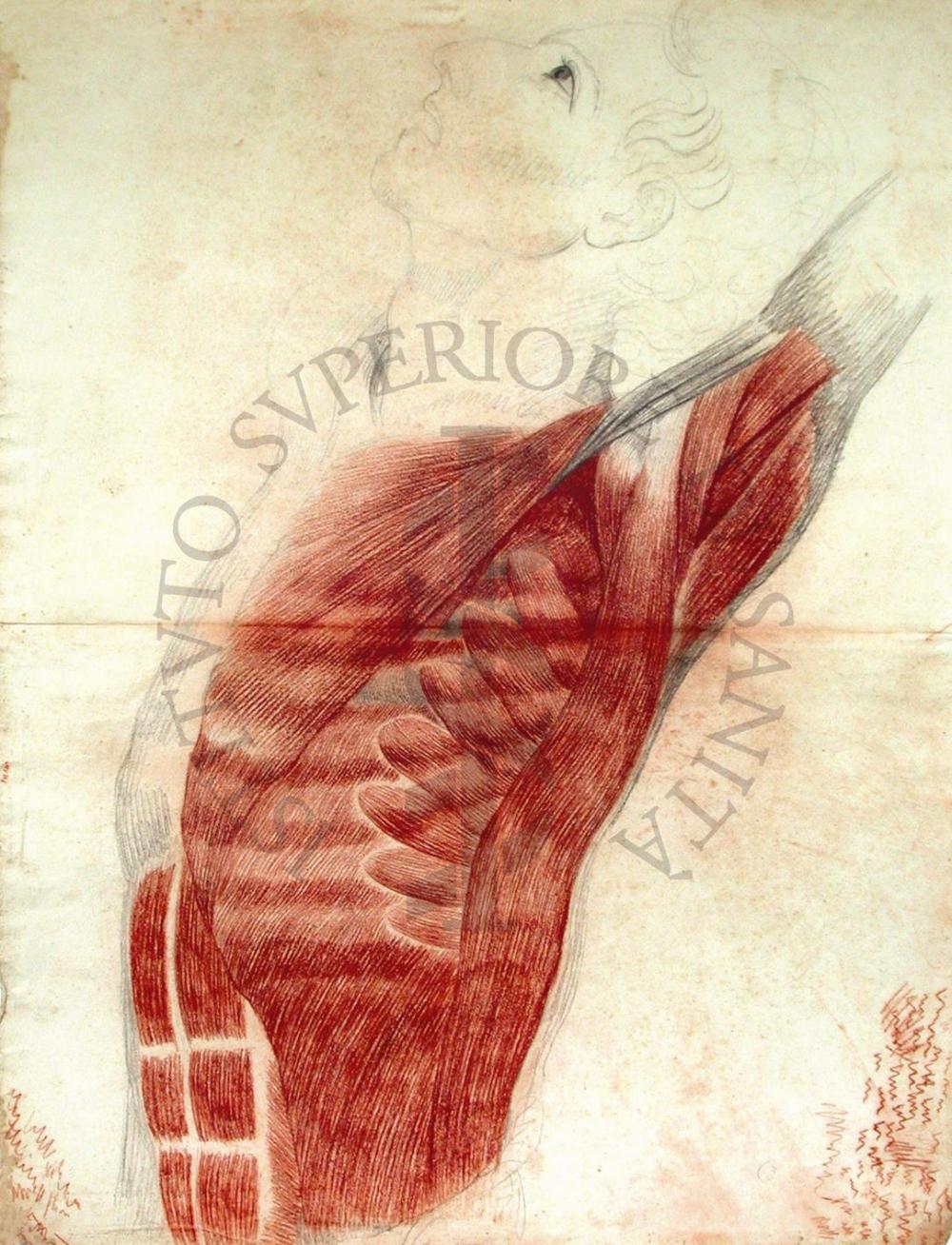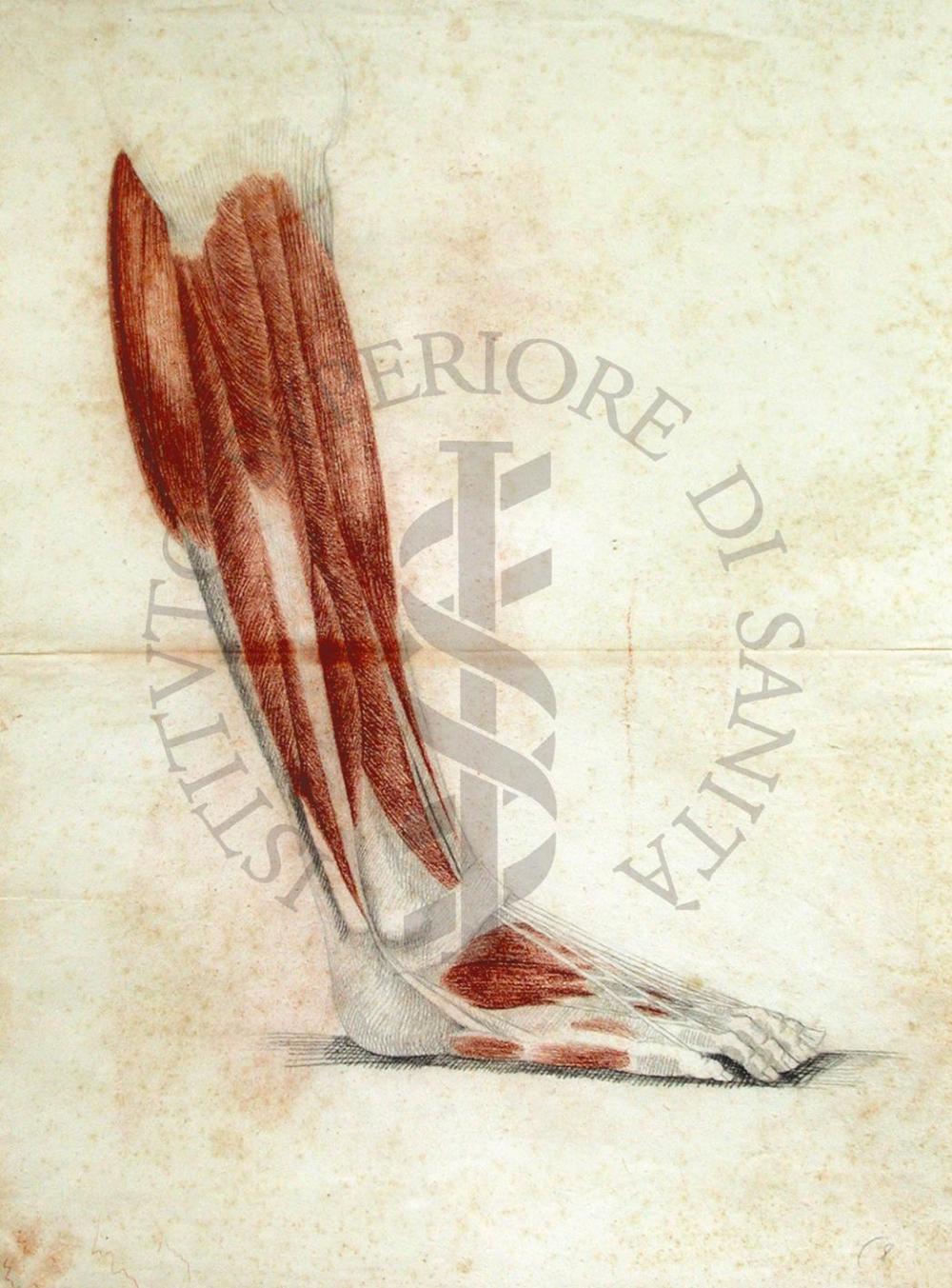Anatomical studies have been for many centuries an obligatory passage for figurative artists and for sculptors, in particular. From the study of the dissected bodies, information was obtained on the distribution of muscles or blood vessels and more generally on the body conformation, both human and animal, and on the articulation of the movements of the various anatomical parts.
Antonio Canova - Biographical notes
The artist was born on 1rst November 1757 in Possagno (Treviso) and his precocious talent was already evident at an early age; he was initiated into the business by his paternal grandfather, a stonemason and a small local sculptor. He worked first in the Venetian environment and then in the Roman one and also held various public positions, such as that of director of the Vatican Museums. He died in Venice on October 13, 1822.
His production is placed in the neoclassical context: he is the only Italian sculptor of that period whose art managed to reach a European level. His works are inspired by Greek-Hellenistic statuary, giving life to artifacts in which the extreme smoothness of the marble is consolidated into the purest forms.
The tables




As for all the artists of the time, Canova's training certainly included the study of anatomy: the anatomical tables bear witness to this. The 17 drawings are a probable early production and can be dated with some uncertainty between the years 1776-1779. They are part of a larger collection and they fix on the cardboard the anatomical knowledge, in particular the myological knowledge of the young Canova. The artist used the graphite line (black) to outline the tendons and accessory anatomical parts, while the muscles are highlighted with the use of sanguine (hematite, red ocher).
The tables are basically in two formats: the small one measures approximately 30 x 48 cm, the large one 48 x 61 cm. The margins have not been trimmed and are heavily irregular.
They were purchased by the ISS for its library from the Olschki antiquarian bookshop in Rome in 1943.
The tables are listed below according to the description and numbering adopted by Massimo Pantaleoni (see Bibliography at the foot of the page)
NECK
table I: Neck muscles
TRUNK
table II: Muscles of the trunk
table III: Muscles of the chest and abdomen
table IV: Muscles of the back
LOWER LIMBS
table V: Muscles of the left lower extremity
table VI: Muscles of the anterior surface of the left thigh viewed from the front
table VII: Posterior superficial muscles of the hip and left thigh
table VIII: Muscles of the leg and back of the foot seen from the side
table IX: Muscles of the anterior surface of the leg and the dorsum of the foot
table X: Superficial muscles of the back of the right leg
table XI: Muscles of the sole of the foot
table XII: Superficial muscles of the foot seen from the dorsal side
UPPER LIMBS
table XIII: Muscles of the left upper extremity shoulder and arm
table XIV: Muscles of the left upper extremity seen from the side
table XV: Muscles of the left upper extremity seen from the front
table XVI: Muscles of the left upper extremity seen from the medial side
table XVII: Muscles of the right hand seen from the dorsal (left) and palmar (right) face
The 17 drawings are accompanied by an autographed manuscript notebook, which the artist entitled Description of the external muscles of the human body. On the last page of the notebook a declaration signed by Cavalier Giuseppe D’Este, drawn up in Rome in March 1850, guarantees by direct knowledge of the signatory the attribution of the tables and notebook to the great Venetian sculptor. The Cav. D'Este was part of the circle of Roman artists or art experts of the first half of the nineteenth century; author of some publications, in the Letter ... to the egregio ... Massimiliano Laboreur professor of sculpture ..., published in Rome in 1828 for the types of Giuseppe Salviucci and son, signs himself as 'under director of the Vatican museum'.
Conservative intervention
Up to 1999, the drawings were placed one on top of the other in a closed folder. Over time, this overlap had caused a strong loss of color, especially of the sanguine, which had deposited on the back of the overlying cardboard. To avoid irreversible deterioration, at the end of 2000 it was decided to enclose each board in a non-acid cardboard folder, structured so that the surface of the design is protected from any contact. The study of the project and the material intervention were entrusted to the Central Institute for Book Pathology, today ICRCPAL - Central Institute for the Restoration and Conservation of Archival and Book Heritage
References
(This list includes the publications dealing with the tables of Canova, or containing references to them, owned by the Library of the Istituto Superiore di Sanità)
- Putti ML. Canova: vita di uno scultore. Roma: Graphofeel, 2020
- Museo Gypsotheca Antonio Canova
- Toni F. Antonio Canova’s drawings in the Rare Books Collection of the Istituto Superiore di Sanità Library. Journal of EAHIL. 2019; 15 (4): 13-17
- Spence R. Antonio Canova, a sculptor for the selfie age. Financial Times 2018; 10 agosto.
- Montanaro G. Nobiltà di marmo: fine scultore e uomo di stato. Così Canova riuscì a stanare la perfezione che rende eterni. Corriere della Sera. 2018; 8 luglio: 57-61
- Ferrara R., Falcone M.A., Ferrari O., Ferrari P., Gentili D., Graziani M.S., Putti M.L. Le tavole canoviane della Biblioteca ISS in mostra a Venezia. Notiziario ISS 2018; 31(7-8): 17
- Joly M. La leçon d’anatomie. Le corps des artistes de la Renaissance au Romantisme. Paris, Éditions Hazan, 2008
- Masini L.V. Antonio Canova e Pietro Tenerani. Tra Neoclassicismo e Restaurazione. La “memoria del futuro” come chiave di lettura. Il disegno nella scultura italiana dell’Ottocento tra Neoclassicismo e Restaurazione. Il corpus dei disegni di Giuseppe De Fabris. A cura di Agato Bruno, Milano, Silvana Editoriale, 2008, p. 13-23
- Le tavole anatomiche di Antonio Canova: dalla collezione dei Libri rari e di pregio dell'Istituto Superiore di Sanità. A cura del Servizio Attività Editoriali. Roma: Istituto Superiore di Sanità; 2006. (Arte e scienza, 1). Riproduzione limitata delle tav. I, II, III, V, VIII, XVI
- Merletti L. L'anatomia tra arte e scienza: note a margine della mostra "Arte e anatomia al tempo di Canova". Annali della Facoltà di Medicina e Chirugia della Università degli Studi di Perugia che pubblicano gli Atti della Accademia Anatomico-Chirurgica. 2005; 95: 53-60
- Salvi P. Gli artisti e l'anatomia. Annali della Facoltà di Medicina e Chirugia della Università degli Studi di Perugia che pubblicano gli Atti della Accademia Anatomico-Chirurgica. 2005; 95: 79-99
- I disegni anatomici del Canova. La nostra ricerca per la salute di tutti. 1934-2004. Roma: Istituto Superiore di Sanità, 2004, p. 41-75
- Canova's anatomical drawings. Research for public health: 1934-2004. Roma: Istituto Superiore di Sanita, 2004, p. 41-75
- Salvi P. Miologie canoviane. La nostra ricerca per la salute di tutti. 1934-2004. Roma: Istituto Superiore di Sanità, 2004, p. 33-39
- Salvi P. Canova's myologies. Reasearch for the benefit of all. 1934-2004. Roma: Istituto Superiore di Sanità, 2004, p. 33-39
- 70 anni dell'Istituto Superiore di Sanità: la nostra ricerca per la salute di tutti 1934-2004. Rassegna stampa e immagini dalla Celebrazione dei 70 anni dell'Istituto Superiore di Sanità Roma, 30 giugno 2004. A cura dell'Ufficio Stampa con la collaborazione del Settore Attività Editoriali. Roma: Istituto Superiore di Sanità, 2004, p. 9-11
- Sleiter R. Quando Canova mostrava i muscoli. Il Venerdì di Repubblica, 25 giugno 2004; 849: 98-99
- Vitiello G., Taranto M. 70 anni dell'Istituto Superiore di Sanità: la nostra ricerca per la salute di tutti 1934-2004. Notiziario dell'Istituto Superiore di Sanità, 2004;17(7/8): 3-7
- I disegni anatomici di Canova. Storia della scienza. Roma: Istituto della Enciclopedia Italiana Treccani, 2002, v.6, p. 659
- Salvi P. Vincenzo Camuccini: disegni d’anatomia presso il vero. Labyrinthos. Ermeneutica delle arti figurative dal Medioevo al Novecento, XX, 39/40, Firenze: Le Lettere, 2001, p. 103-158
- Salvi P. Giuseppe Bossi: il corso miologico dell’Accademia di Brera. Labyrinthos. Ermeneutica delle arti figurative dal Medioevo al Novecento, XVII, 33/34, Firenze: Le Lettere, 1998, p. 175-215
- Pantaleoni M. Disegni anatomici di Antonio Canova. Istituto Superiore di Sanità, Roma, Fondazione Emanuele Paternò, 1949


